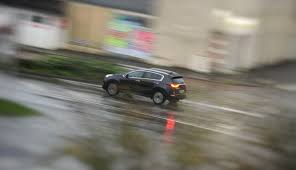PDF chapter test TRY NOW
Consider that you're stooped at the signal due to traffic, and once you see the green signal, suddenly you're increasing the speed of your bike/car to move fastly, and this act of increasing the speed is called, acceleration.

Acceleration (a):
The acceleration can be defined as the rate of change in velocity.
When the object undergoes acceleration, its speed and/or direction change(s).
If an object changes its speed or direction, then it is said to be accelerated.
The change in velocity can be written as .
Where \(v\) is the final velocity of an object and \(u\) is the initial velocity of an object.
The SI unit of acceleration is .
Types of acceleration:
- Positive acceleration
- Negative acceleration
Positive acceleration:
If the velocity of an object increases with respect to time, then the object is said to be in positive acceleration or just acceleration.
Example:
A bike moving with increasing speed has a positive acceleration.
After the green signal, a vehicle moves fastly.
Negative acceleration:
If the velocity of an object decreases with respect to time, then the object is said to be in negative acceleration or deceleration or retardation.
Example:
A running car slowly stops.
A rolling ball that slowly stops.
Reference:
Image credits:
Car image: https://www.pxfuel.com/en/free-photo-xstno
